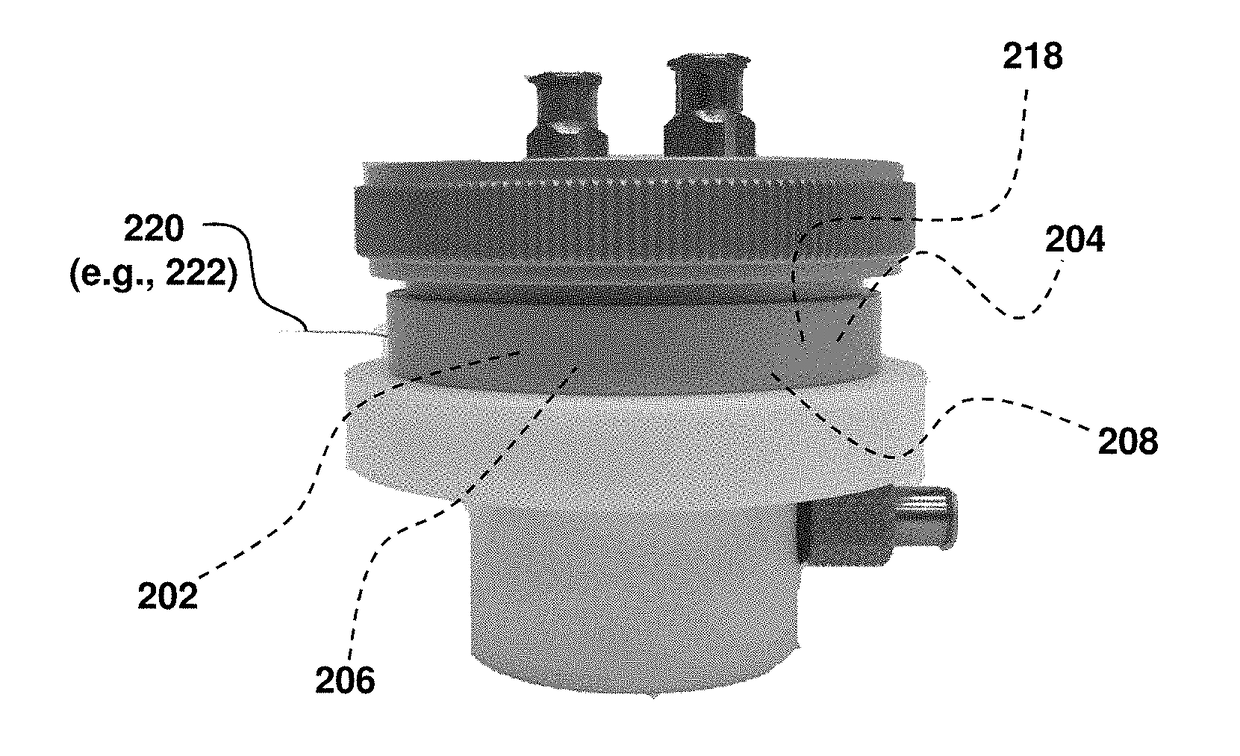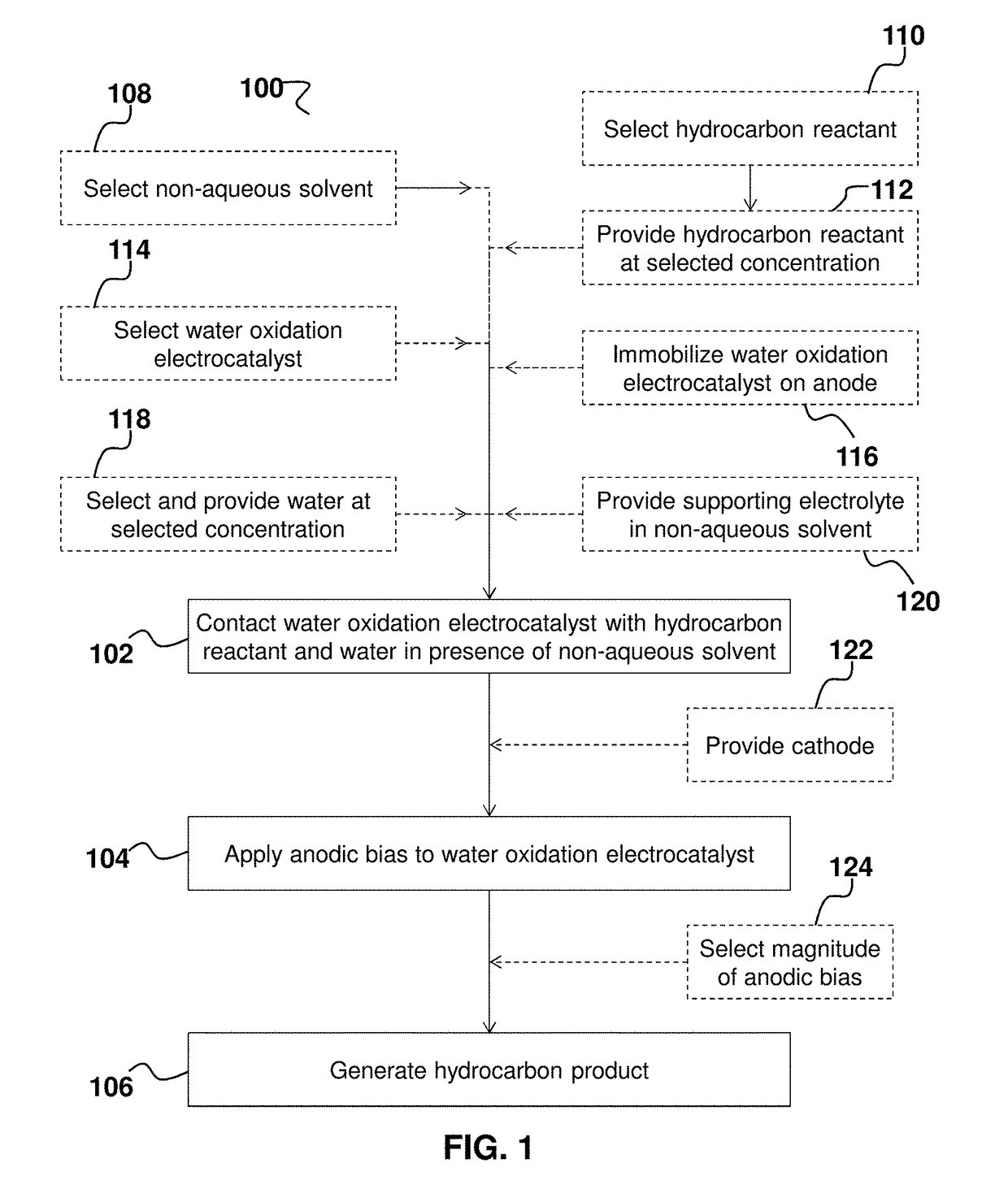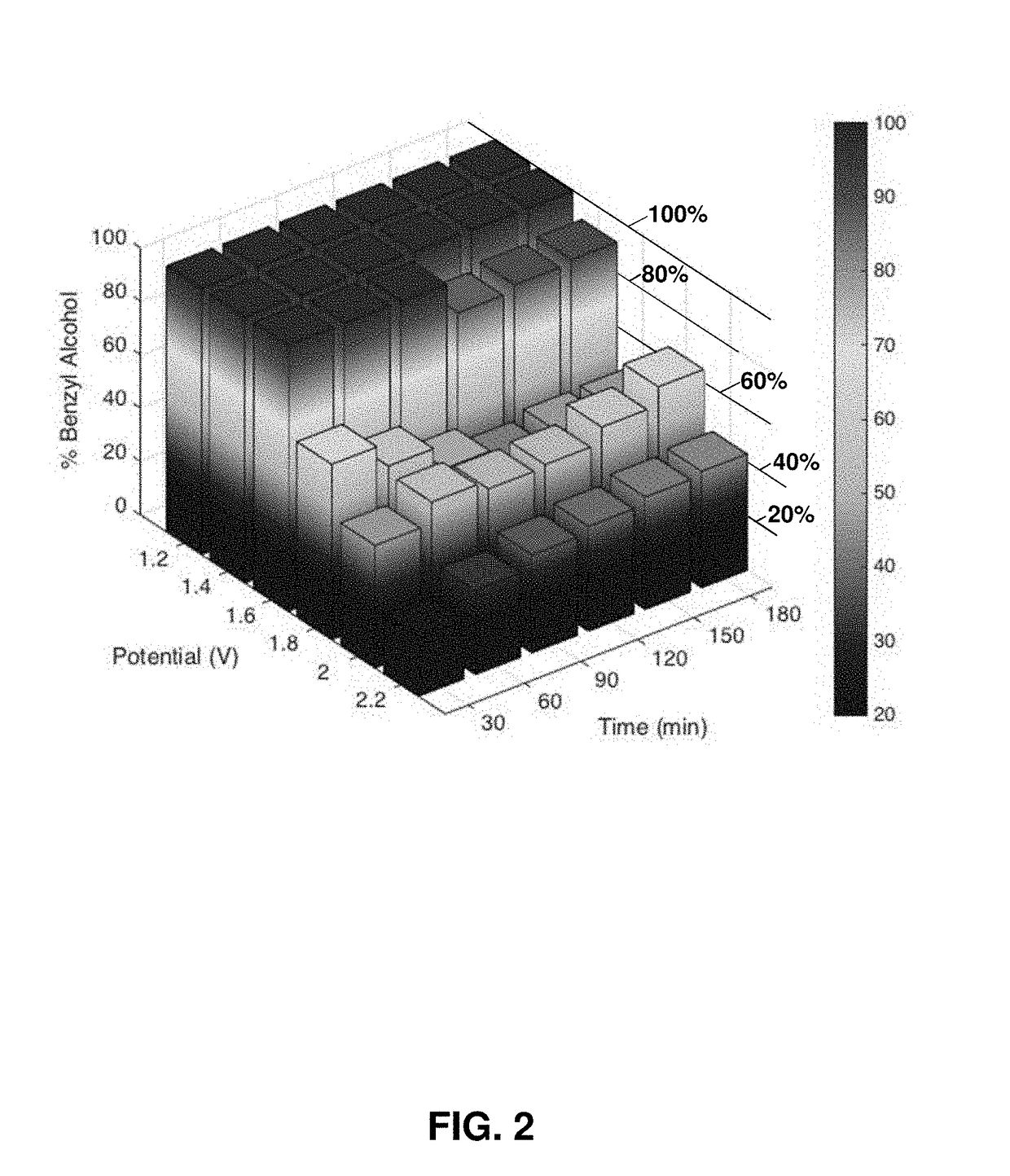Hydrocarbon oxidation by water oxidation electrocatalysts in non-aqueous solvents
a water oxidation electrocatalyst and non-aqueous solvent technology, applied in the direction of electrolytic organic production, multiple component coatings, electrolytic coatings, etc., can solve the problems of oxidation of carbon-hydrogen bonds, high energy consumption, and high energy consumption of reagents, so as to prevent solubilization or miscibility of catalysts
- Summary
- Abstract
- Description
- Claims
- Application Information
AI Technical Summary
Benefits of technology
Problems solved by technology
Method used
Image
Examples
example 1
on Oxidation by Water Oxidation Electrocatalysts in Non-Aqueous Solvents
[0133]Catalytic methods and systems, particularly electrocatalytic methods and systems, for selectively oxidizing hydrocarbon compounds (e.g., reactants 202) using water oxidation electrocatalyst(s) 200 in non-aqueous solvents (e.g., non-aqueous solvent 206) have been discovered. In this example, nickel-based layered double hydroxides (LDHs) doped with iron are shown to be excellent heterogeneous water oxidation electrocatalysts under anodic bias. In this example, hydrocarbon oxidation has been observed in acetonitrile as the non-aqueous solvent. These methods and systems, the first of its kind to utilize a water oxidation electrocatalyst, can be optimized to perform transformations of critical importance to industry, pharmaceuticals, and materials science by selectively activating strong C—H bonds in hydrocarbon reactant(s) 202 to produce useful hydrocarbon product(s) 208 from cheap feedstocks in a sustainable ...
example 2
[0153]Experimental:
[0154]These exemplary experiments are run in wet (0.5% water) acetonitrile with 0.1% (v / v) hydrocarbon reactant with 5 mm width carbon fiber paper (CFP) electrodes unless otherwise noted Two 5 mm wide strips of carbon fiber paper are soaked in isopropanol for 10 seconds and allowed to dry. One is then soaked in a suspension of [NiFe]-LDH nanosheets, as an exemplary water oxidation electrocatalyst, (12 nm diameter) (2 mg of catalyst in 1 mL deionized water) for 15 minutes. The electrodes are dried for 10 minutes under an infrared heat lamp. Electrolysis is performed in a standard three-compartment bulk electrolysis cell, with the counter and reference compartments separated from the working compartment by porous glass frits. Electrolyte solution is 0.1 M NaClO4 in acetonitrile. The electrolysis is run for three hours (25° C.) at a potential of 1.4 V vs a Pt wire pseudo-reference electrode (Gamry Reference 600 Potentiostat). The counter electrode i...
example 3
of (2-chloroethyl)benzene
[0178]Experimental:
[0179]These exemplary experiments are run in wet (0.5% water) acetonitrile with 0.1% (v / v) hydrocarbon reactant with 5 mm width CFP electrodes unless otherwise noted. A 5 mm wide strip of carbon fiber paper is soaked in isopropanol for 10 seconds and allowed to dry. The electrode is then soaked in a solution of [NiFe]-LDH nanosheets (12 nm diameter) (2 mg of catalyst in 1 mL deionized water) for 15 minutes. The electrode is dried for 10 minutes under an infrared heat lamp. Electrolysis is performed in a standard three-compartment bulk electrolysis cell, with the counter and reference compartments separated from the working compartment by porous glass frits. Electrolyte solution is 0.1 M NaClO4 in acetonitrile. The electrolysis is run for twelve hours (25° C.) at a potential of 1.6 V vs a Pt wire pseudo-reference (Princeton Applied Research Model 173 Potentiostat with MATLAB Controller). The counter electrode is platinum wire.
[0180]Product ...
PUM
 Login to View More
Login to View More Abstract
Description
Claims
Application Information
 Login to View More
Login to View More - R&D
- Intellectual Property
- Life Sciences
- Materials
- Tech Scout
- Unparalleled Data Quality
- Higher Quality Content
- 60% Fewer Hallucinations
Browse by: Latest US Patents, China's latest patents, Technical Efficacy Thesaurus, Application Domain, Technology Topic, Popular Technical Reports.
© 2025 PatSnap. All rights reserved.Legal|Privacy policy|Modern Slavery Act Transparency Statement|Sitemap|About US| Contact US: help@patsnap.com



